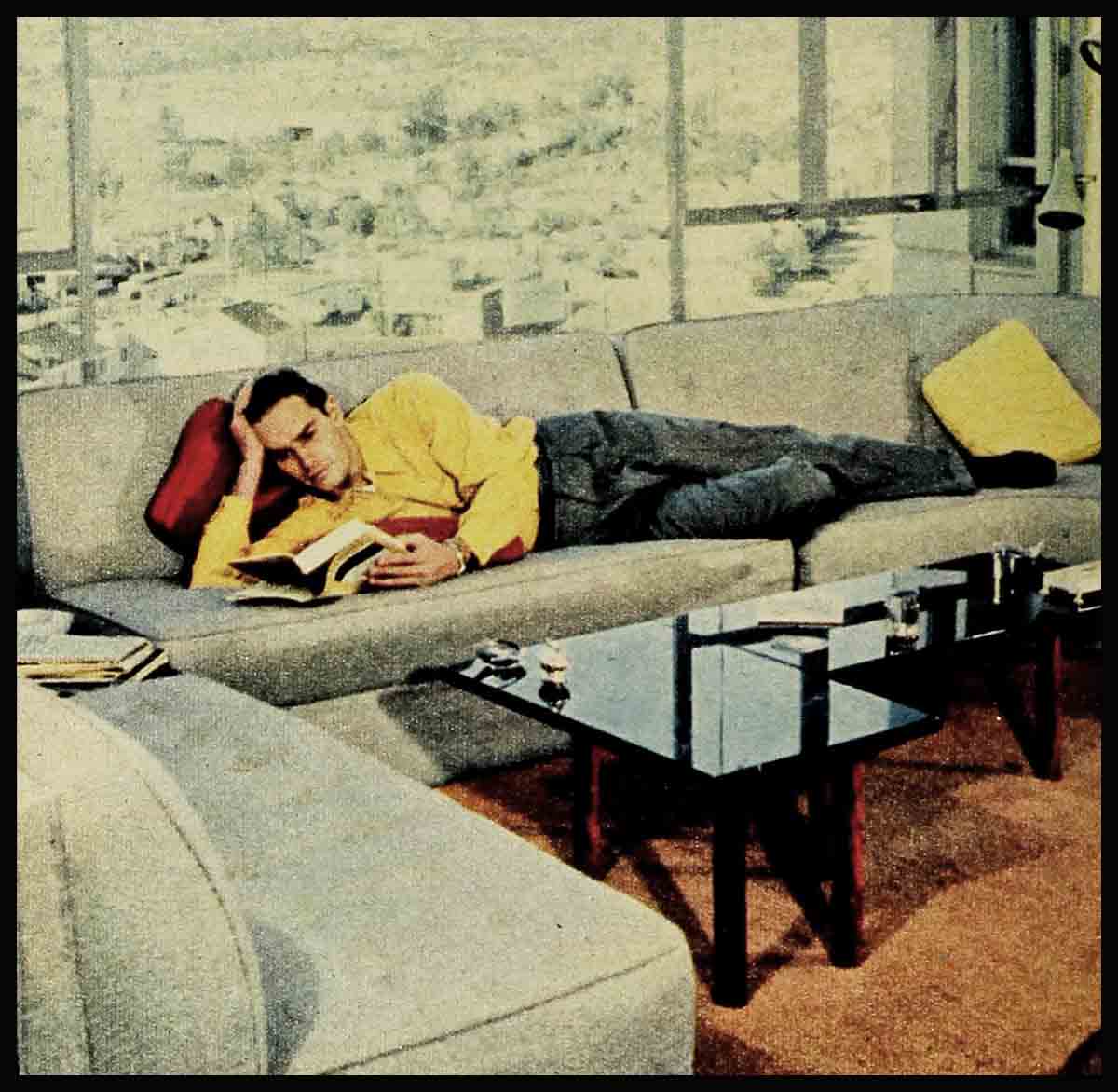
Charlton Heston’s Ivory Tower
In Hollywood, there is a relative newcomer who has four homes. His name is Charlton Carter Heston. To the unsophisticated; this broad-shouldered young giant lumbering down Hollywood Boulevard, might give the impression of a young man taking a day off from his milking stool.
Dressed in T-shirt, blue jeans, and moccasins, his customary getup, Heston looks like a charter member of the Marlon Brando Institute for Sartorial Splendor.
In short, he gives the impression of not owning a bean, and yet he pays rent on a Tudor City apartment overlooking the East River in midtown New York, more rent on a beautifully furnished duplex around the corner from the Ambassador East in Chicago, taxes on a hunting lodge and 1,388 acres of timberland along the Osaba River in northern Michigan, and still more rent for a two-bedroom apartment in Hollywood.
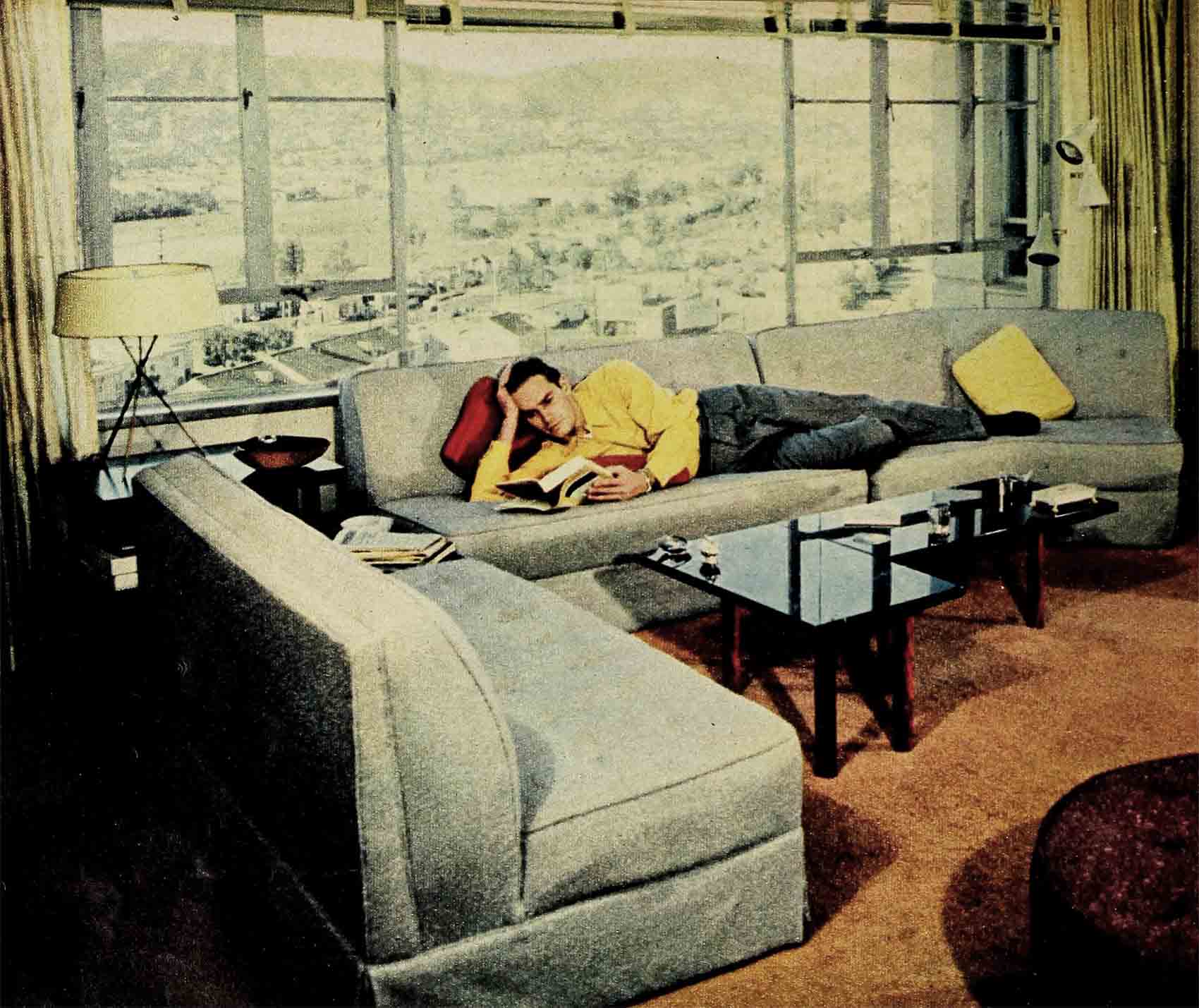
Heston at thirty is a movie star. He has appeared in Greatest Show on Earth, Ruby Gentry, Pony Express, Arrowhead, The Savage, Naked Jungle, Legend Of The Incas, and a few others. His latest apartment is typical of Hollywood apartments leased by successful young actors, and it’s the most dramatic and glamorous of the four Heston residences.
You may well ask why a new actor like Charlton needs four homes for his T-shirts.
In addition to T-shirts, Heston owns a wife and an original Toulouse-Lautrec lithograph. This wife, whose name is Lydia Clark, is also in the acting business. Maybe you caught her with Chuck in Atomic City and Scalpel. Right now she’s in Chicago starring in a play, The Seven Year Itch.
Before that she starred in several other plays, all of which took her away from her husband.
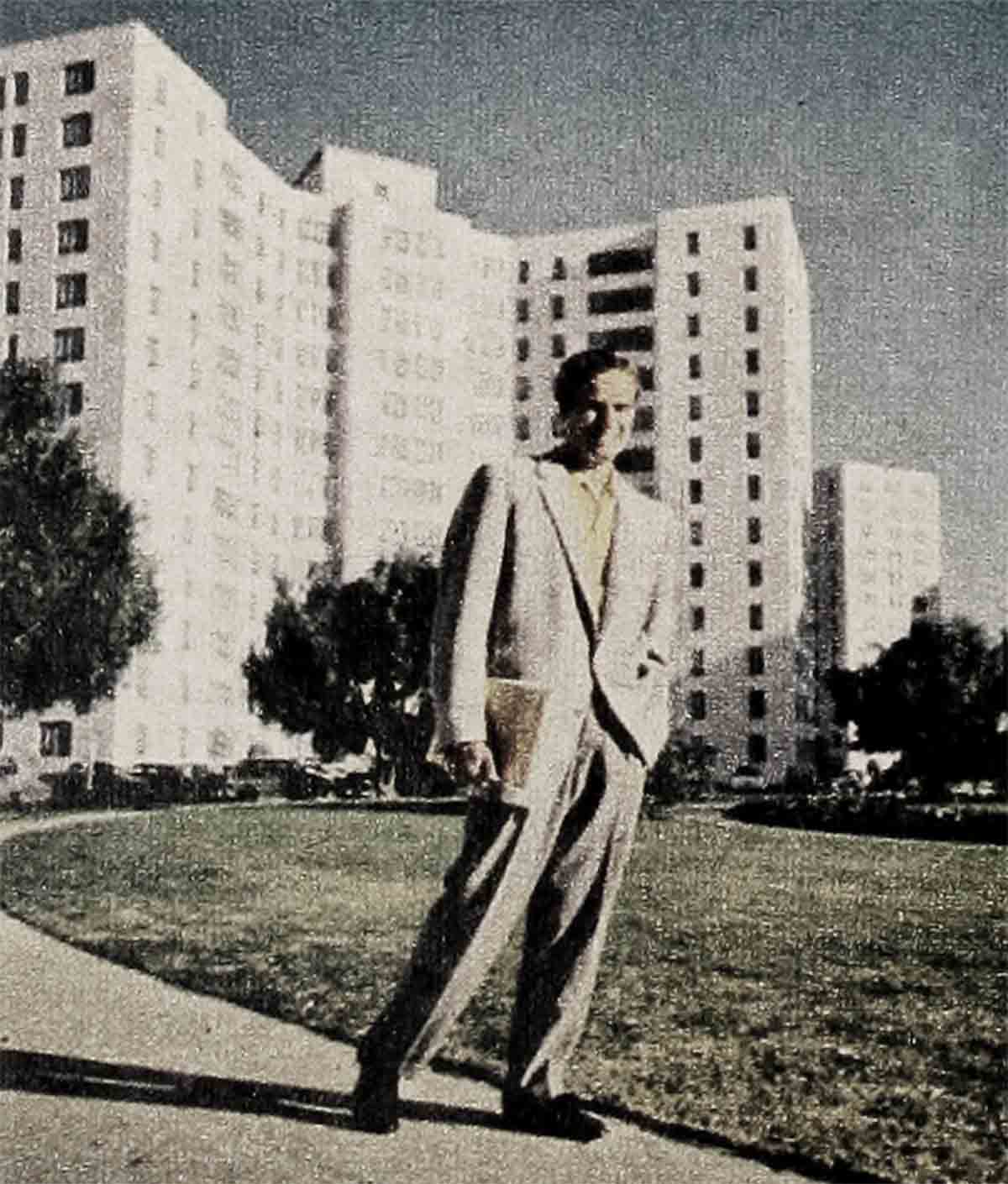
In the ten years of their marriage, the Hestons have spent approximately six years away from each other. That’s why they need all of these apartments.
Charlton and Lydia were college sweethearts at Northwestern University, both scholarship students majoring in dramatics. Lydia’s first impression of her husband-to-be was that he should be returned to the cage from which he’d escaped.
Heston, however, who has a primitive sort of appeal and a persistent approach of rustic simplicity, extended the coed a carte blanche marriage proposal.
“I just love you all the time,” he once told her, “and whenever you get ready to marry, just say the word.”
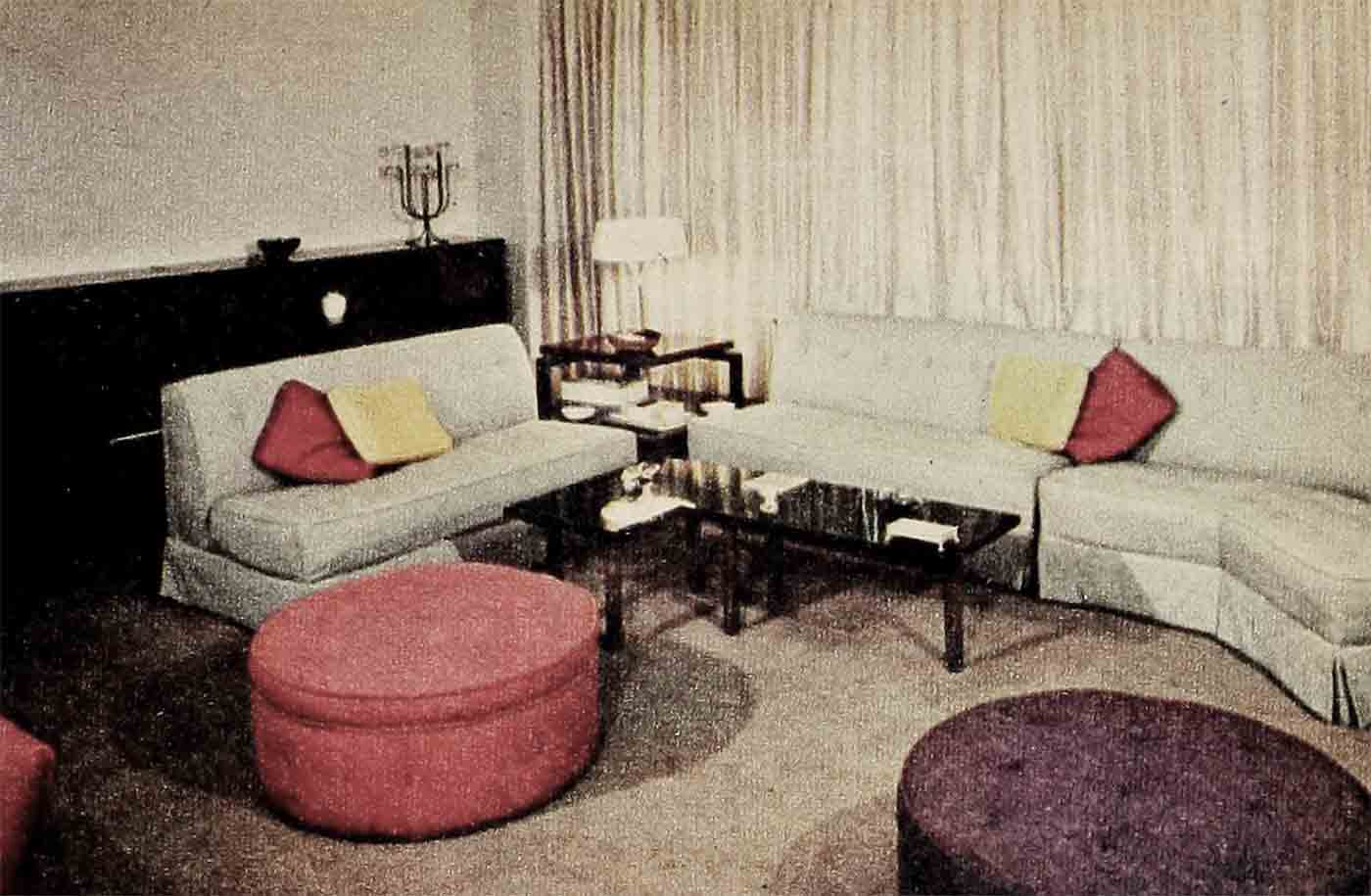
In 1944 the Army Air Forces had laid claim to the Heston bulk and shipped him off to Greensboro, North Carolina, for a little basic training. Lydia, in a moment of common sense she has never regretted, decided to make life easier for the boy and for herself.
She became his wife. A two-day honeymoon, and Charlton returned to the base and was subsequently shipped off to the Aleutian Islands, nobody’s favorite Army location.
Chuck Heston says now that dreams of his Lydia kept him safe and sane, and when he returned to Chicago at the war’s end, he was heavier and healthier than ever before. “Only I didn’t have any money, so we took a small furnished flat and lived on about ten bucks a week.”
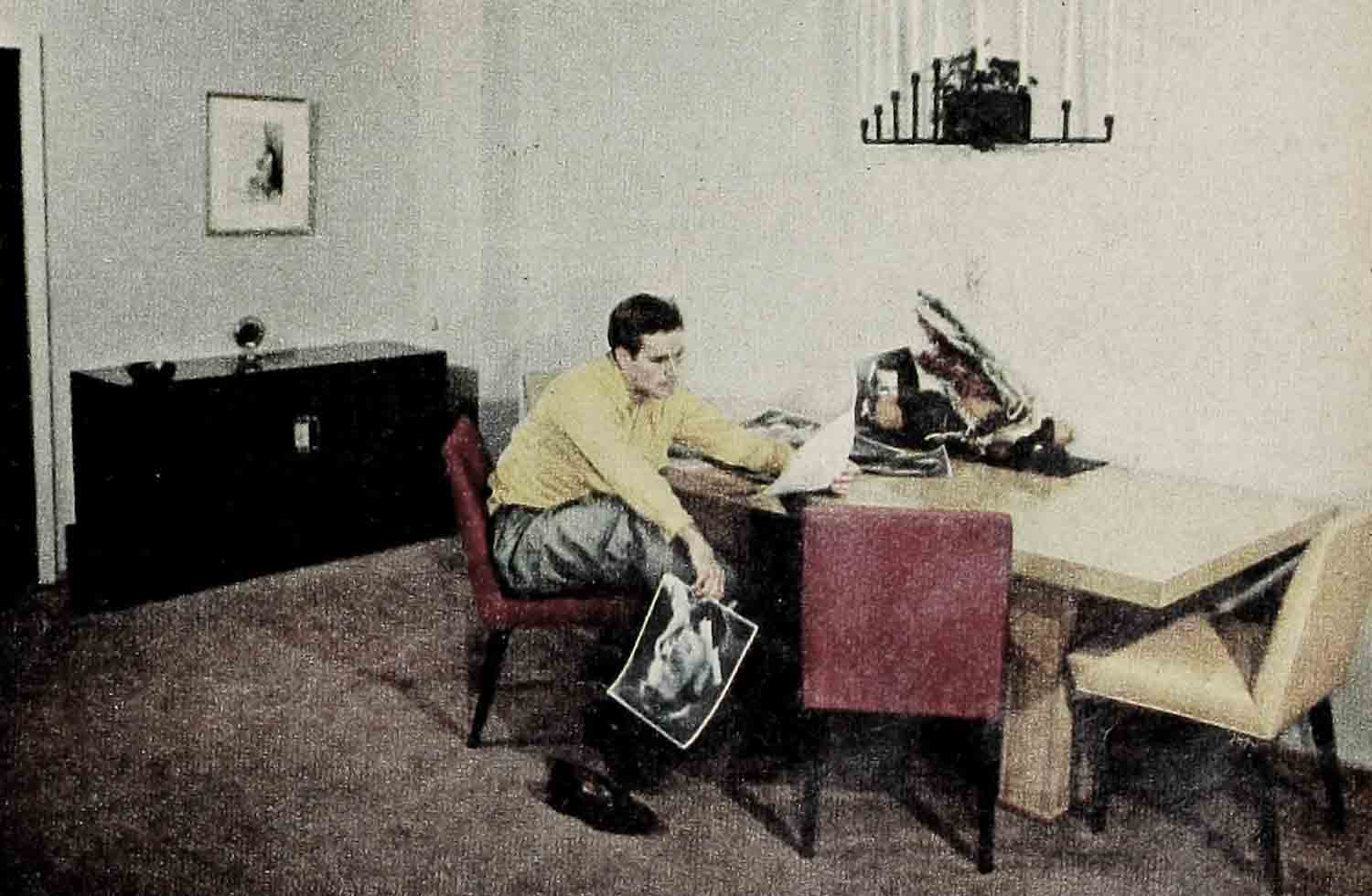
Acting jobs weren’t numerous in the midwest, so the young couple moved on to New York. They rented a small, coldwater tenement flat in Hell’s Kitchen—“it cost us thirty a month and we kept it until the building was condemned”—and then started making the rounds looking for work.
Chuck landed a job in Boston with a play, The Leaf And The Bough. Lydia was signed for the Chicago run of Detective Story.
The Leaf And The Bough had a short run and Chuck returned to the New York coldwater flat. Lydia stayed on in Chicago for over a year, and it was during that year that Chuck Heston caught on in television.
Hal Wallis offered him a job in Hollywood just as Detective Story ended in Chicago and Lydia returned to New York. This exit-and-entrance schedule is an occupational hazard when there are two acting careers in one family.
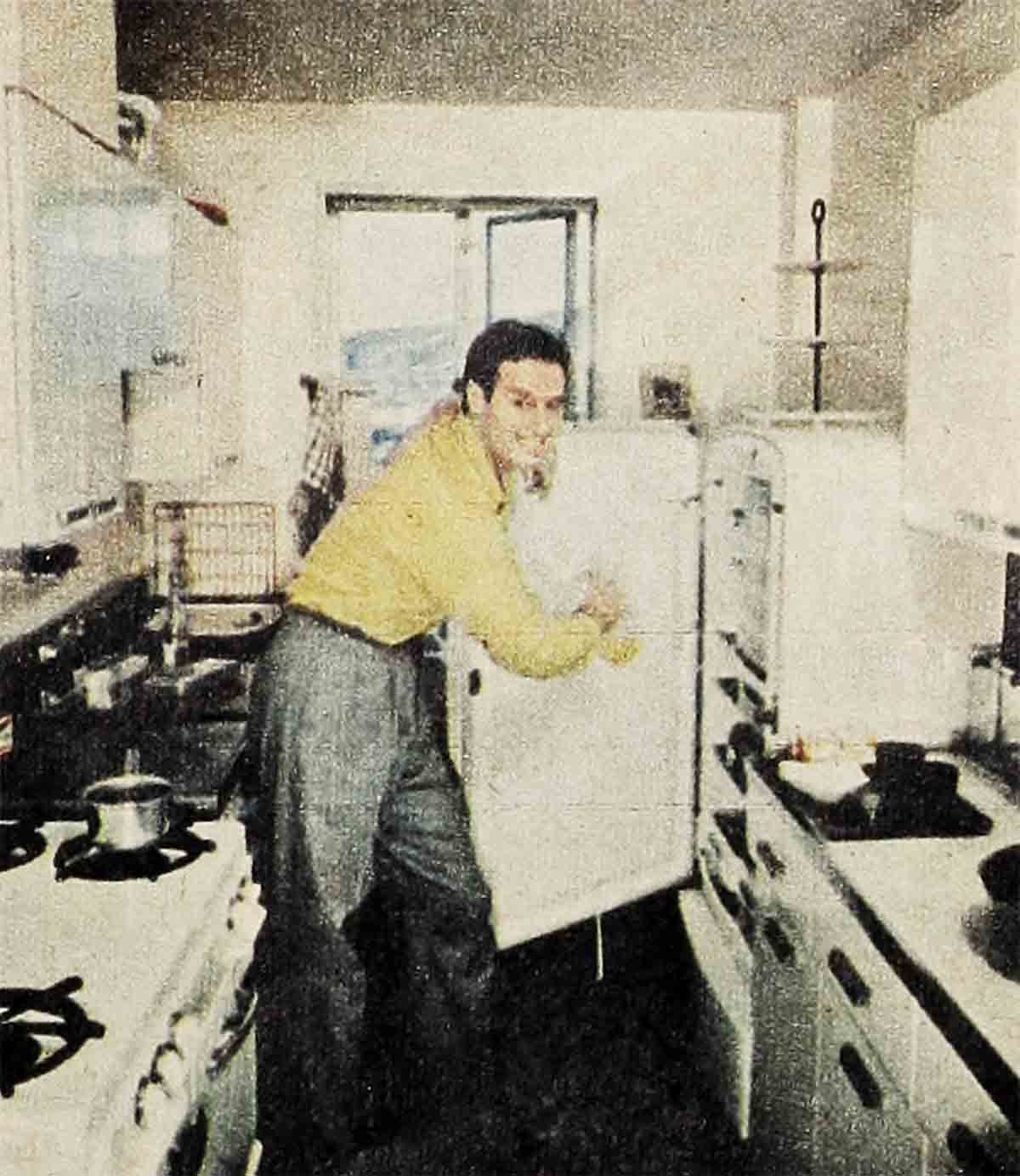
“Neither of us pretends it’s the greatest way to live,” Lydia points out. “But Chuck has his work, and I have mine, and somehow geography always stands in the way.”
A larger family might take care of geography and do away with the necessity of having apartments in New York and Chicago, but the Hestons haven’t got around to children, yet.
The Hollywood apartment started with Toulouse-Lautrec. The Hestons’ Lautrec lithograph is a sketch of the great actress Sarah Bernhardt playing the role of the tragic character, Phédre. Chuck and Lydia were so thrilled when they found themselves in actual possession of the work that they decided to furnish a Hollywood apartment around it.
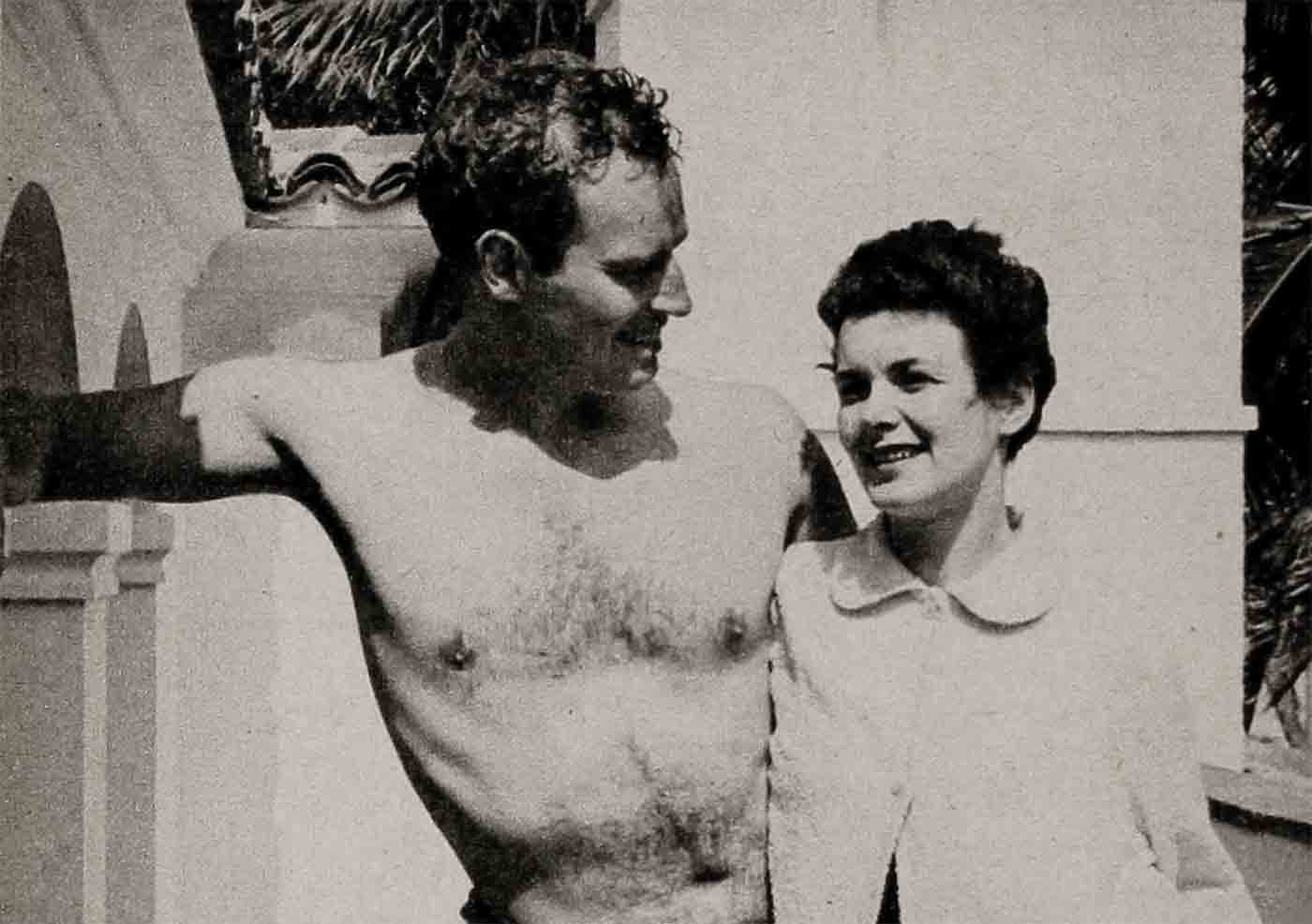
“Ever since I saw my first Lautrec in college,” Heston recalls, “I’ve wanted to own one. Then when I really started studying drama I realized that Lautrec was one of the few really great artists who spent a lot of time painting actors and actresses. Just as Degas immortalized the ballet, Lautrec immortalized the theatre. To me he has always represented the perfect alliance of art and theatre. I don’t want to sound hammy about it; but owning one of his originals represents a milestone of accomplishment in my life.”
The Hestons bought their one great picture with the help of Chuck’s agent, Maynard Morris, who for years now has been collecting the works of the French artists, especially the impressionists.
A few years ago when his salary began to hover above the $100-a-week mark, Chuck casually approached Morris. “Maynard,” he said, “if you ever run across a reasonable Lautrec, let me know.”
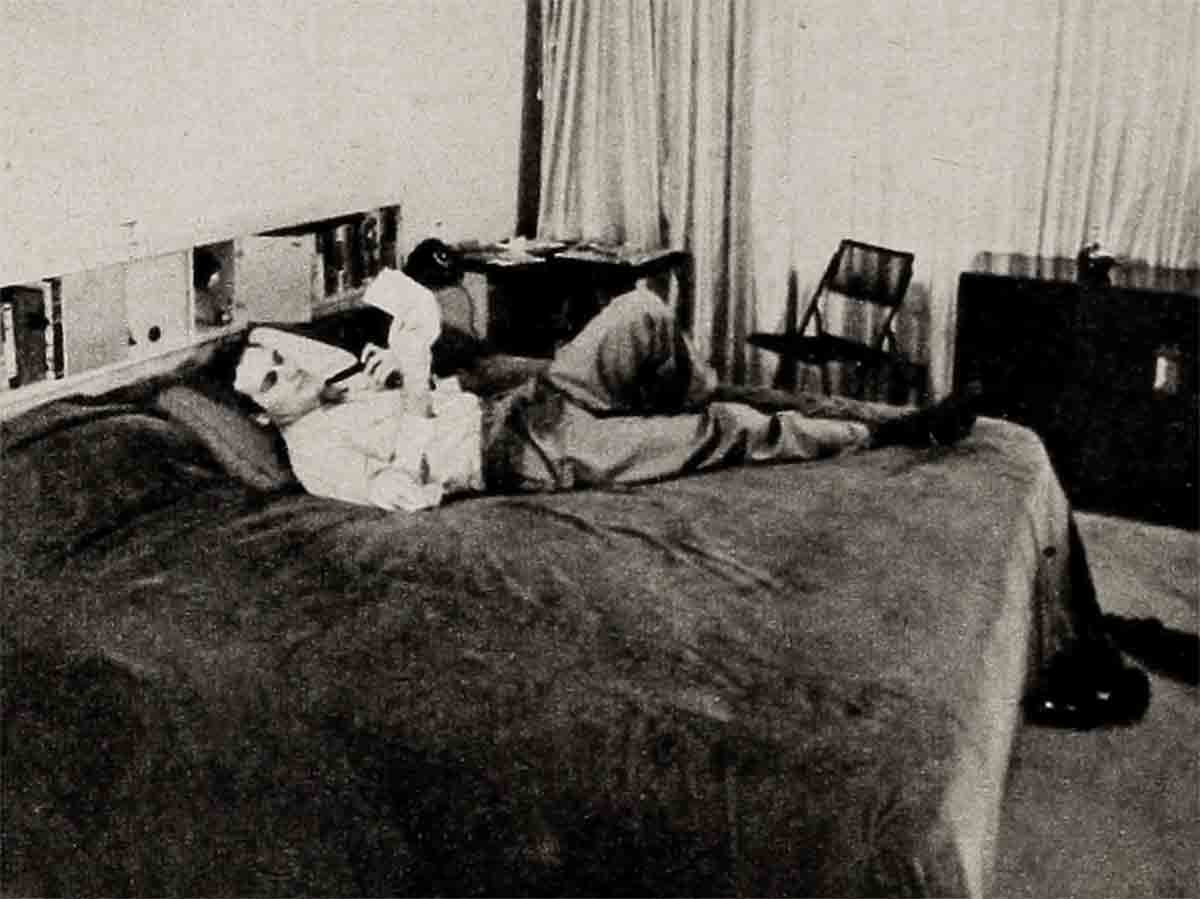
Six months later, Morris called Heston to his office on the pretext of reading a script. Instead, he showed the actor the Lautrec. “Take it home,” he urged, “and show it to Lydia. Try living with it for a few weeks. Don’t rush into buying something you may not want to keep for a lifetime.”
Once Lydia glimpsed the beautiful little picture, there was no turning back. The Hestons not only bought it immediately but decided that the time had come to stop traipsing around Hollywood from one hotel to another. What they wanted and needed was an apartment they could furnish in their own way. You don’t want to hang an original in a hotel room.
Last January they moved into the La Brea Towers, an enormous housing project erected by the Metropolitan Life Insurance Company. These “Towers” are tremendous apartment houses unlike anything Los Angeles had ever seen.
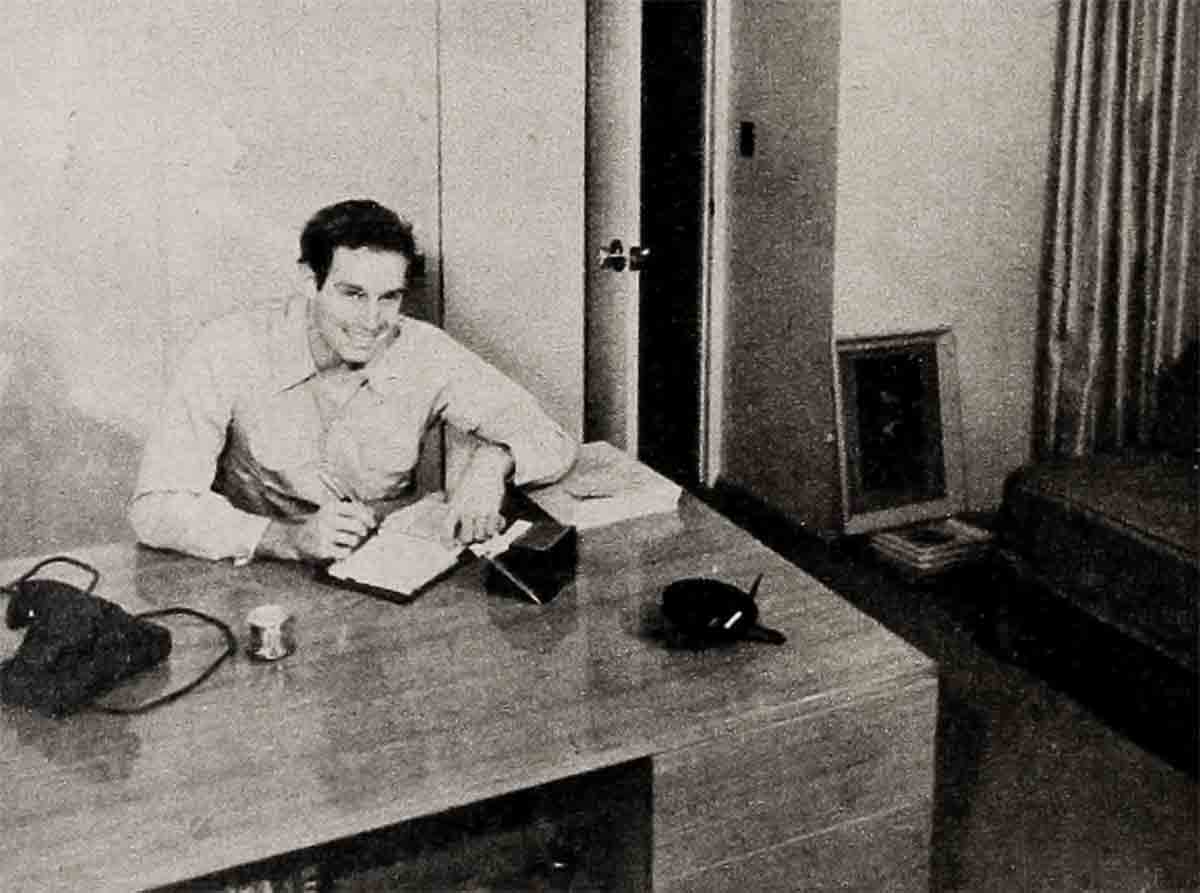
They are the most un-California-like buildings in California. They look as if they belong in New York or Chicago. They were built tall and sprawling, because that’s how profits are made in rental units.
The La Brea Towers are near all the motion picture studios. This is particularly convenient for Chuck since his contract with Paramount is a very special one. He not only has the right to appear on as many TV shows as he can crowd into his schedule, but he also has the right to do outside pictures. He doesn’t have much opportunity for outside work since Paramount suffers from a dearth of contract players who can play straight dramatic leads.
Last January, the Hestons signed the lease for their new apartment and had worked themselves into a fever of enthusiasm about furnishing it when Paramount decided to shoot The Legend Of The Incas in Peru.
“Just think of it,” Chuck was told. “You can take Lydia to Peru with you.”
“But she wants to furnish our apartment,” Heston pointed out. “After all my time out here, we finally got a place of our own.”
“Let her stay behind,” someone suggested. But the only trouble with the Heston marriage has always been the separation of wife and husband. Now, they had the opportunity for a trip together.
There wasn’t a doubt in Lydia’s mind. “I’m going with you,” she said, and with that, she called up three friends and turned over the job of decorating the Heston apartment to them.
Two of the friends, Milburn Stone and Walter Sande, are actors who own a custom cabinet shop on the side. They made all the major furniture pieces in the apartment. They designed the intricate music cabinet that houses all the electronics devices—the TV set, the wire recorder, the high fidelity unit. They made the simple birch dining table and the marble-topped coffee tables in the living room, also the all-inclusive headboard that goes with the Hestons’ over-scale bed.
This fine example of well-wrought cabinetwork contains everything but a towel rack. There’s a speaker that connects to the hi-fi system. Reading lights snap on when you open the little compartment doors; and night tables are integral parts of this whole surprisingly utilitarian unit.
The third friend helping to decorate the Heston apartment was Gladys Miller, an interior decorator who was responsible for doing over Blair House in Washington, D. C. and supervising the decor of the new Statler hotel in Los Angeles.
Before Chuck and Lydia left for Lima, they told her that “what we like is good contemporary furniture, solid colors, and things without legs.”
“I hate chairs with thin, pipestem legs,” Chuck said. “I have a feeling they’ll never be able to support me.”
For Gladys Miller, decorating the Heston place was no snap. Every time she found some exciting new fabric or an interesting lamp base, she’d have to fly samples and snapshots to South America for her clients’ approval.
The intercourse was extensive but eventually it was agreed that she would furnish the living-dining room in two contrasting woods: dark mahogany and birch. Gladys covered the contour couches in neutral grey and saved the splashes of solid color for the two oversize hassocks and the dining chairs.
For economy and for a pleasing uniformity throughout the apartment, Gladys used one continuous carpeting, and she repeated the same shantung draperies at every window.
In the extra bedroom which also serves as Chuck’s den, she slip-covered two day beds in eye-opening turquoise cotton. She arranged them at right angles with a lamp table at the head of both beds. When the Hestons have no houseguests, these serve as couches.
Knowing Chuck’s habit of stretching full-length while listening to his recordings, the decorator used a wonderfully practical bedspread of moss green corduroy on the master bed.
Through the years the Hestons have been traveling so much that they’ve made it a point to acquire few belongings. Now that they regard their Hollywood spot as “more or less permanent,” they’ve begun to acquire modern candelabras of wrought iron and brightly colored ceramic ashtrays, and other bric-a-brac.
Up to now, they have tried to limit their possessions to clothes, books, recordings, and a camera.
When Chuck and Lydia returned from Peru, their apartment was just about done. They had moved in and settled down when Lydia was offered the irresistible lead in we Chicago company of The Seven Year Itch.
The same old story. Only this time, Lydia had such fond memories of the Hollywood apartment she’d left behind that she rented one in Chicago and had it redecorated.
The three great centers of show business in the U. S. are New York, Chicago, and Hollywood. Between them, Chuck and Lydia have all three centers covered. No matter where he’s working, whether it’s on screen, stage, TV, or radio, Chuck Heston has a home for his T-shirt. It is more economical for the Hestons to pay rent than it is for them to pay hotel bills.
All three apartments cost him less than $500 a month, and the way the big boy from the Michigan backwoods has been going lately, five bills a month is not extravagant. On Hollywood’s success ladder Charlton Heston is climbing quickly and he’s getting close to the highest rung.
THE END
—BY MARVA PETERSON
It is a quote. MODERN SCREEN MAGAZINE FEBRUARY 1954




